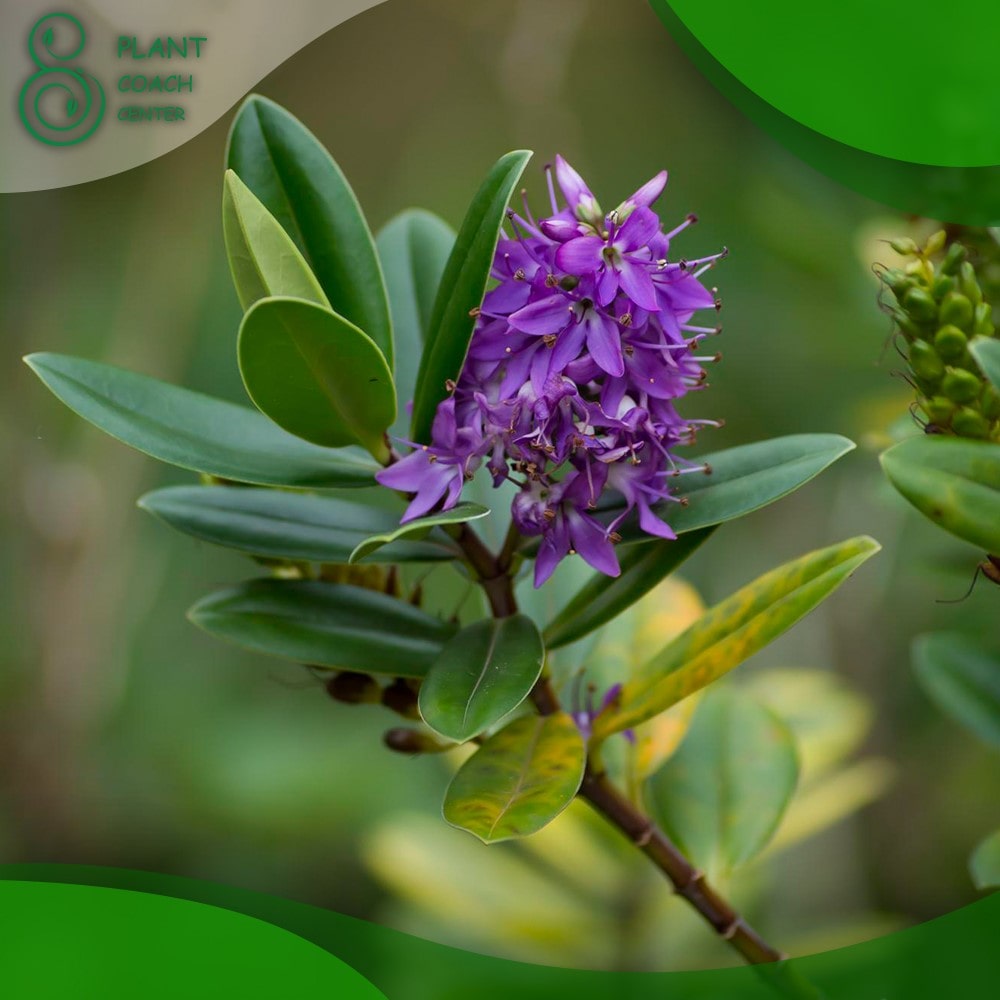Introduction to When to Prune Hebe
Hebe, a cherished and adaptable garden shrub, graces our landscapes with its vibrant foliage and delicate blooms. In this article, we delve into the essential aspect of Hebe care that often dictates its health and appearance: the precise timing of pruning.
The key to cultivating a thriving Hebe lies not only in knowing how to prune but also when to do so. As gardeners, we understand that every season plays a unique role in our horticultural endeavors, and Hebe is no exception. So, let’s embark on a journey through the seasons, uncovering the critical influence of timing on Hebe pruning.
In the following sections of plantcoachcenter.com , we will explore the optimal moments for pruning in spring and summer, caution against late fall and winter attempts, and discover the subtle signals that signal your Hebe’s readiness for a trim. Prepare to transform your garden as we unlock the secrets of when to prune Hebe.
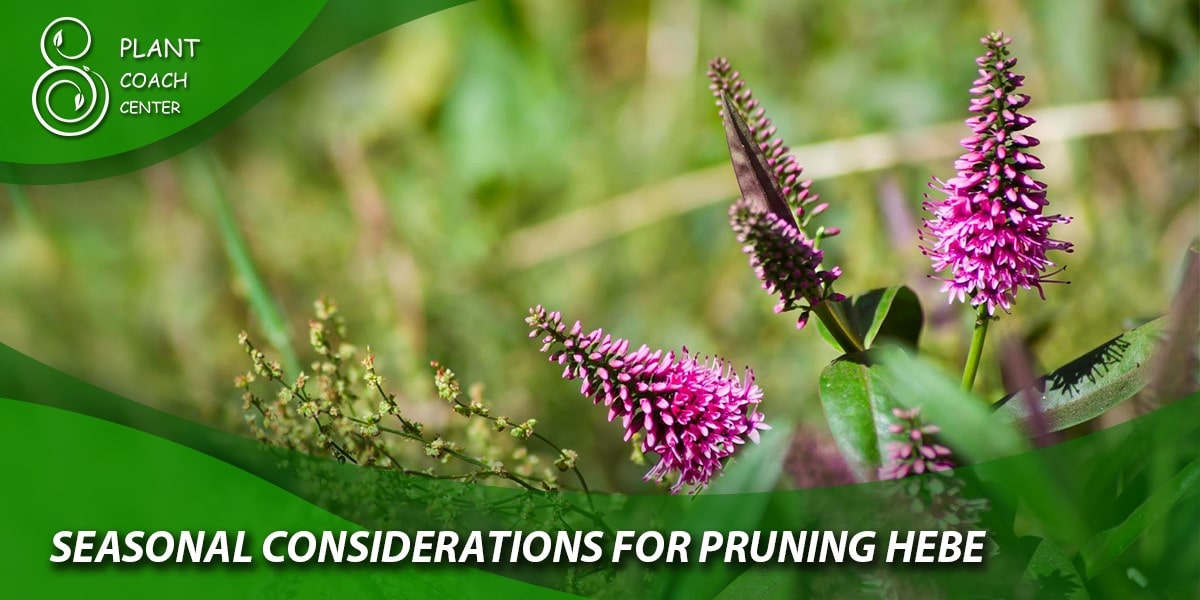
Seasonal Considerations for Pruning Hebe
When it comes to Hebe pruning, timing is a crucial factor, and different seasons offer distinct advantages and disadvantages. Let’s delve into each season’s unique considerations:
Spring Pruning
Spring heralds a new beginning for Hebe enthusiasts, offering several advantages for pruning:
Advantages of Spring Pruning: Pruning Hebe in spring provides a clean slate for the growing season ahead. It’s the perfect time to remove dead or damaged branches that may have suffered during winter. Additionally, trimming in spring stimulates vigorous growth, fostering a bushier and healthier plant.
Shaping and Invigorating: Spring pruning is not just about maintenance; it’s an opportunity to shape your Hebe. Trimming back leggy growth and encouraging lateral branches promotes a compact and aesthetically pleasing appearance. This invigorating trim sets the stage for a robust growing season.
Best Time in Spring: Timing is everything, even within the spring season. Aim to prune Hebe after the last frost date for your region. This varies but typically falls in early to mid-spring. Pruning too early can leave your Hebe vulnerable to late frosts, so exercise caution and monitor local weather conditions.
Summer Pruning
Summer presents a unique set of circumstances that might necessitate a second round of pruning:
Scenarios for Summer Pruning: While spring pruning primarily focuses on structural adjustments, summer pruning is often required for maintenance. If your Hebe experiences excessive growth during the growing season, especially if it starts to obstruct paths or neighboring plants, a light summer trim can keep it in check.
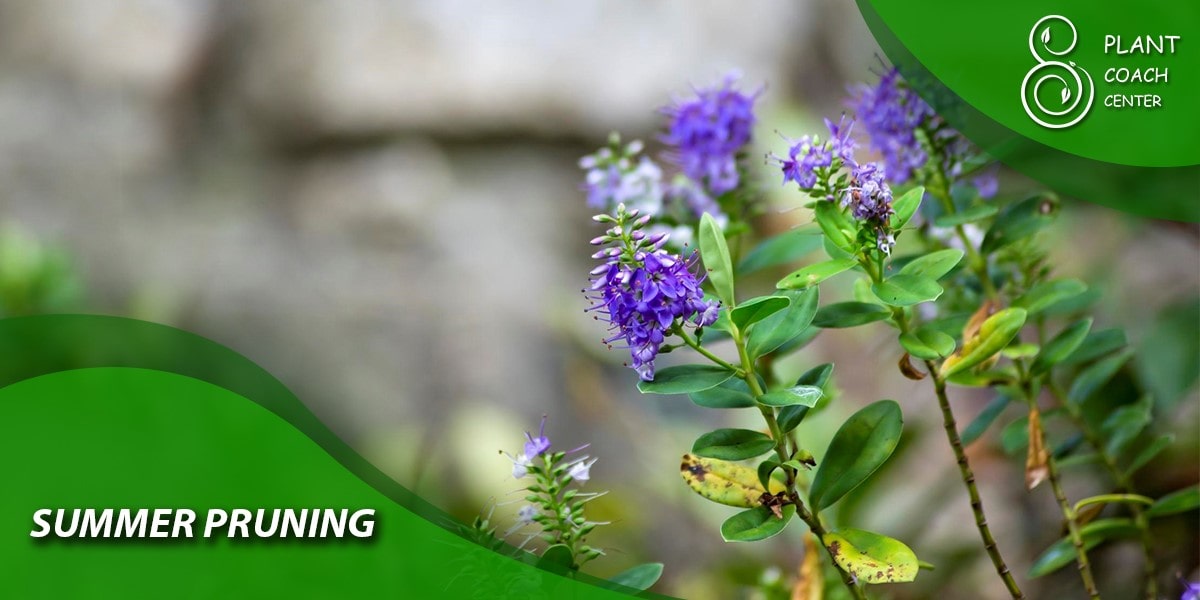
Maintaining Form: Light summer pruning is not about heavy-handed shaping but rather maintaining the desired form. Focus on removing the most excessive growth to ensure your Hebe retains its intended size and shape.
Effective and Safe Summer Pruning: To safely prune during summer, wait for the initial flush of growth to subside, typically in early to mid-summer. Avoid major cuts during the hottest part of the day to prevent stress to the plant. Sterilize your pruning tools to minimize the risk of disease transmission.
Fall: A Season of Caution
Late summer and early fall are seasons that warrant caution when it comes to Hebe pruning:
Why Not Late Summer and Early Fall: Pruning Hebe during late summer or early fall can be problematic. The plant is preparing for winter dormancy, and pruning during this time can stimulate new growth that won’t have sufficient time to harden before winter. This can make your Hebe vulnerable to frost damage.
Potential Risks: The risks associated with fall pruning include exposing your Hebe to diseases and pests that thrive in the cooler, wetter conditions of autumn. Additionally, fresh cuts may not heal properly in the colder weather, leading to potential stress and decline.
Winter: Avoid at All Costs
Winter is unequivocally the wrong time for Hebe pruning:
Avoid Winter Pruning: When winter arrives, it’s time to stow away your pruning tools. Pruning during winter is detrimental to Hebe’s health. The plant is dormant, and cutting during this time disrupts its natural processes and exposes it to harsh winter conditions.
Harm and Recovery Challenges: Pruning in winter can result in severe harm, with the potential for frost damage and delayed healing. Your Hebe may struggle to recover, and its overall health can suffer as a result. It’s a season best reserved for observing and planning, not pruning.
Understanding these seasonal considerations is crucial for successful Hebe pruning. Each season has its role to play, and by respecting their individual characteristics, you can ensure your Hebe thrives year-round.
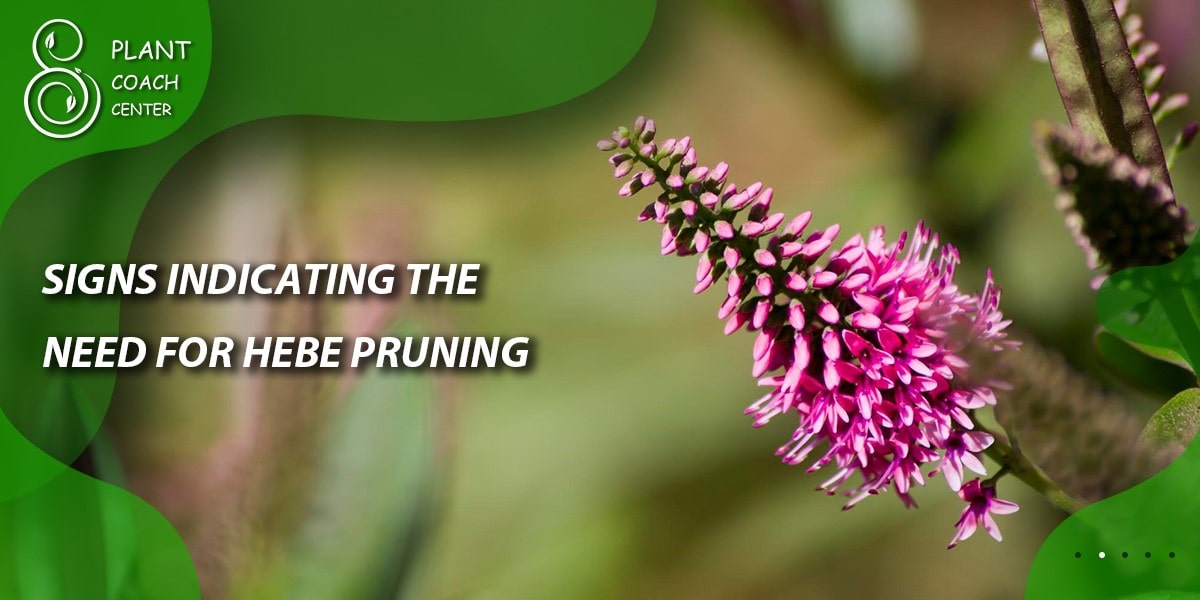
Signs Indicating the Need for Hebe Pruning
Pruning Hebe isn’t just about following a calendar; it’s also about reading the silent signals your plant sends. Here, we’ll explore the visual cues that scream, “It’s time to prune!” and connect these signs to specific seasons for practical guidance.
Explore Visual Cues for Pruning
Overgrown Appearance: One of the most apparent signs that your Hebe is due for a trim is its overgrown appearance. If your once neatly shaped shrub has become unruly, extending beyond its intended boundaries, it’s a clear indicator that pruning is in order. This visual cue is especially common in late spring or early summer when Hebe experiences its peak growth.
Leggy Growth: Hebe plants can develop leggy growth over time, characterized by long, bare stems with foliage concentrated at the tips. This not only diminishes the plant’s aesthetic appeal but also indicates that it’s struggling to maintain its form. If you notice leggy growth, consider a rejuvenating trim in late winter or early spring.
Dead or Diseased Branches: Any time of the year, dead or diseased branches should be promptly pruned. These unsightly or unhealthy growths not only detract from the overall appearance of your Hebe but can also spread disease to other parts of the plant. Regardless of the season, remove these branches as soon as you spot them.
Connect Signs to Specific Seasons
Spring Signals: In spring, your Hebe may exhibit signs of vigorous new growth. This is the ideal time for rejuvenation pruning to shape the plant and encourage bushier, healthier growth throughout the season. When you see overgrowth or leggy branches in spring, seize the opportunity to prune and revitalize your Hebe.
Summer Vigilance: Summer is the season for maintenance pruning, and visual cues such as excessive growth and unruly branches become prominent. Keep an eye out for Hebe encroaching on pathways or neighboring plants. A light summer trim can help maintain its form and prevent it from becoming too invasive.
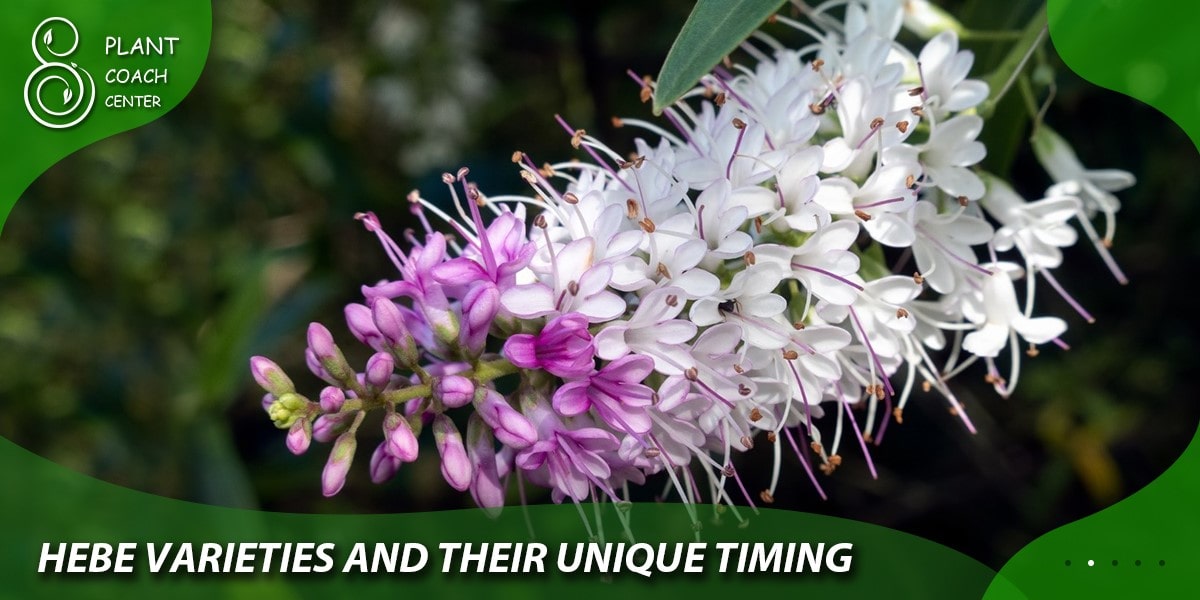
Fall Precaution: While it’s generally not advisable to prune Hebe in late summer or early fall, you should still remain vigilant for signs of disease or damage. If you notice dead or diseased branches during this time, address them immediately to prevent further issues.
Winter Observation: In winter, refrain from pruning, but take the time to closely observe your Hebe. Note any damage or winter stress that may require attention when pruning becomes appropriate in spring. Winter provides a valuable window for planning your pruning strategy.
By learning to recognize these visual cues and connecting them to specific seasons, you can fine-tune your Hebe pruning schedule. This attentive approach ensures that your Hebe not only looks its best but also thrives in the long run.
Hebe Varieties and Their Unique Timing
Hebe is a diverse genus with a wide range of species and cultivars, each with its own growth habits and preferences. Understanding these variations is crucial when it comes to the timing of pruning. Let’s explore how different Hebe varieties may require distinct approaches to pruning timing:
Variations in Hebe Species and Cultivars
Hebe encompasses an array of species and cultivated varieties, and these differences directly influence their pruning needs. Here are some common variations to consider:
Hebe Species: Various Hebe species exist, and they can vary in their growth patterns and flowering times. Some species, like Hebe pinguifolia, are naturally compact and require less frequent pruning, while others, such as Hebe speciosa, can grow quite vigorously and need more regular attention.
Cultivated Varieties: Within each species, numerous cultivated varieties (cultivars) have been developed, each with its unique characteristics. Cultivars may differ in size, foliage color, and flowering habits. For instance, the ‘Variegata’ cultivar boasts variegated foliage, adding visual interest to your garden.
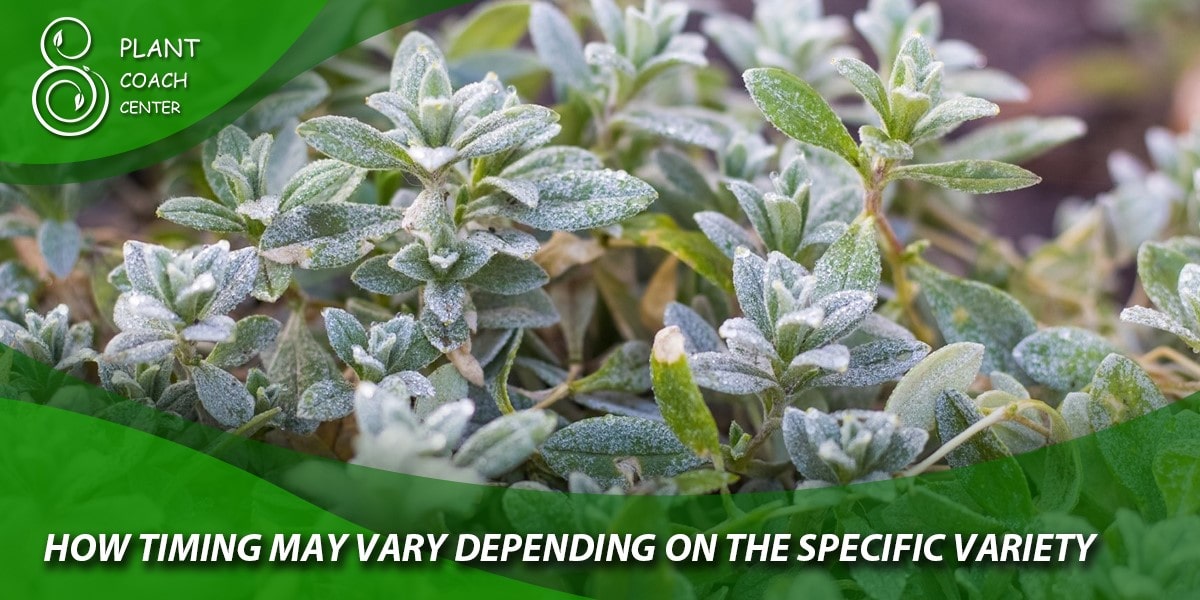
How Timing May Vary Depending on the Specific Variety
When it comes to the timing of pruning Hebe, the specific variety you have can influence your approach:
Early Bloomers vs. Late Bloomers: Some Hebe varieties bloom earlier in the growing season, while others flower later. If you have an early blooming variety, consider pruning immediately after flowering in late spring or early summer to allow for new growth and bud formation. For late bloomers, pruning can be delayed until mid or late summer.
Size Matters: The ultimate size of your Hebe also affects pruning timing. Compact varieties may need less frequent pruning to maintain their shape, while larger ones might require more regular maintenance to prevent overgrowth.
Foliage Characteristics: Varieties with unique foliage characteristics, such as variegation or distinctive leaf shapes, may benefit from tailored pruning to showcase these features. For instance, variegated varieties may require more attention to ensure the variegation remains prominent.
Climate Considerations: Regional climate variations can influence the timing of Hebe pruning. In regions with milder winters, you may have more flexibility in your pruning schedule. However, in colder climates, it’s crucial to avoid late fall and winter pruning to protect your Hebe from frost damage.
To determine the ideal timing for pruning your specific Hebe variety, it’s essential to research and understand its growth habits and flowering patterns. Observing your plant throughout the seasons and noting when it exhibits signs of growth or flowering can also provide valuable insights. By tailoring your pruning schedule to your Hebe’s unique characteristics, you’ll ensure that it thrives and remains a beautiful addition to your garden.
Maintaining a Seasonal Pruning Schedule
Maintaining a consistent seasonal pruning schedule for your Hebe is crucial for its overall health and appearance. In this section, we’ll provide a practical calendar to guide you through the seasons and offer tips to help you stay organized and on track with your Hebe pruning regimen.
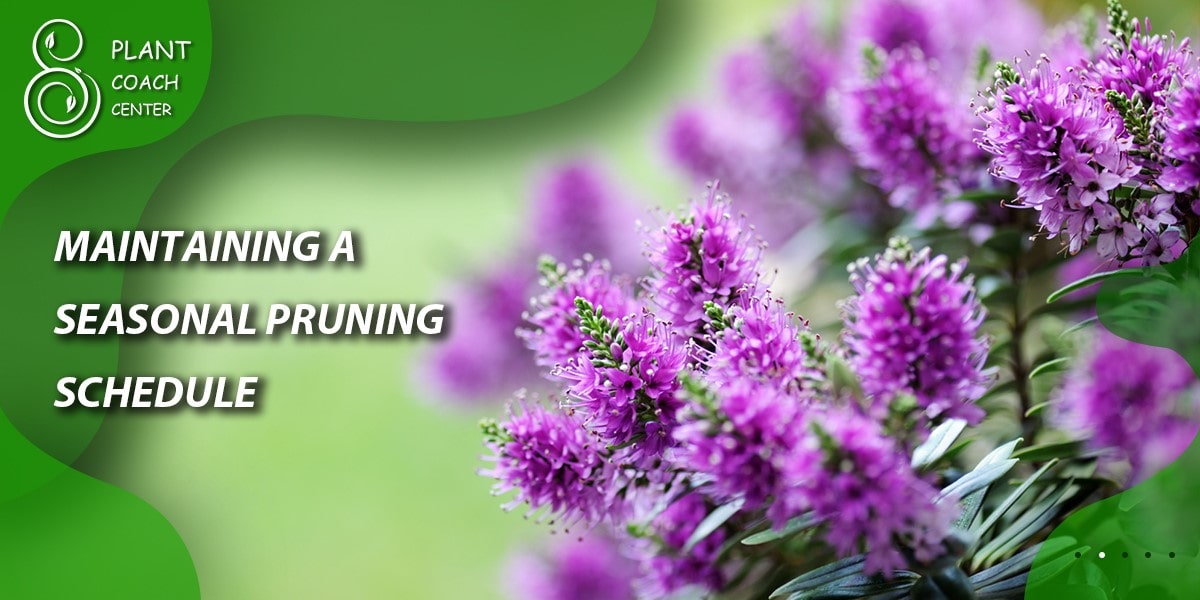
Practical Calendar for Hebe Pruning
Late Winter (February to Early March):
For deciduous Hebe varieties, this is the prime time for pruning. They are still dormant, and you can shape them before the new growth begins.
Inspect evergreen Hebes for any winter damage or dead branches and remove them if necessary.
Early Spring (Late March to April):
As temperatures begin to rise, it’s the perfect time for rejuvenating pruning of most Hebe varieties.
Trim back leggy growth and cut out any dead or damaged branches.
Avoid heavy pruning if your Hebe is an early bloomer (flowers in spring), as you may risk removing flower buds.
Late Spring (May to Early June):
If your Hebe blooms later in the season, such as in summer or early fall, you can perform more decisive pruning after flowering.
Continue to monitor for any signs of overgrowth or leggy branches and trim as needed.
Summer (June to August):
Focus on maintenance pruning during the summer months. Remove any excessively vigorous growth to maintain shape.
Ensure your Hebe does not encroach on paths or other garden elements.
Early Fall (September to October):
While pruning should generally be avoided during this season, it’s an excellent time to assess your Hebe’s health and needs for the upcoming year.
Remove any dead or diseased branches as you prepare for the dormant season.
Tips for Staying Organized and On Track
Garden Journal: Keep a garden journal or digital calendar to record your Hebe pruning activities. Note the dates of each pruning session and the specific tasks you performed. This will help you establish patterns and recognize when your Hebe requires attention in subsequent years.
Species and Cultivar Information: Document the specific Hebe species or cultivars you have in your garden. Knowing their unique characteristics, including bloom times and growth habits, will enable you to tailor your pruning schedule more effectively.
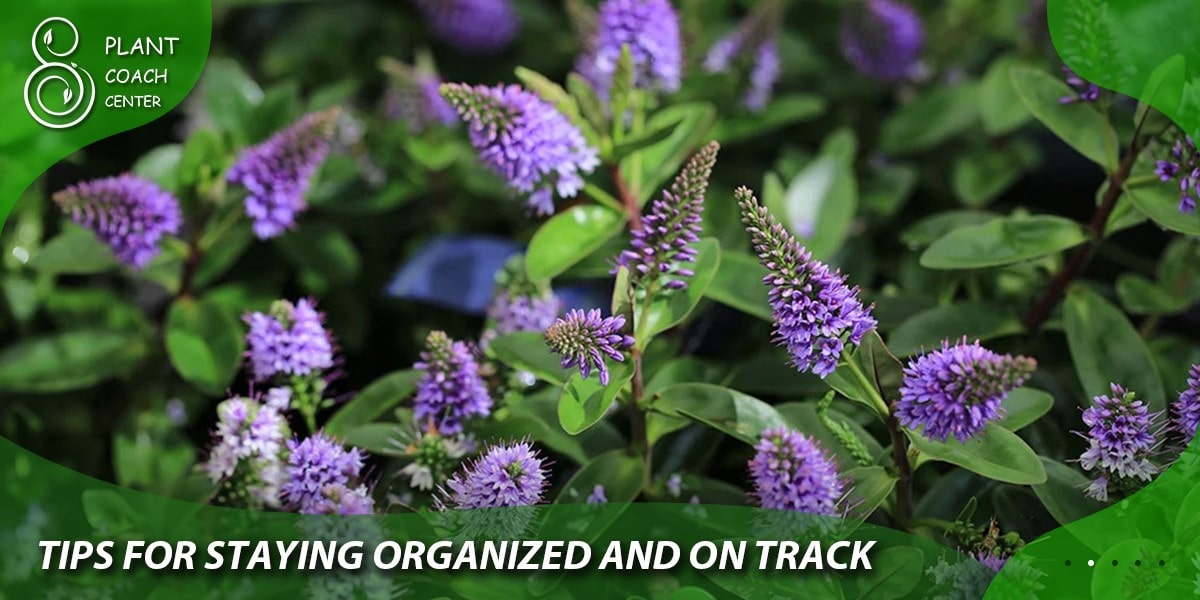
Regular Inspections: Make it a habit to inspect your Hebe regularly throughout the year. Look for visual cues such as overgrowth, leggy branches, or signs of damage. Catching these issues early will allow for more precise and less drastic pruning.
Pruning Tools: Ensure your pruning tools are clean, sharp, and well-maintained. Dull or dirty tools can damage your Hebe and spread diseases. Sterilize your tools between cuts, especially when removing diseased branches.
Local Climate Considerations: Be mindful of your local climate and microclimates within your garden. Adjust your pruning schedule as needed based on temperature and frost dates, as these can vary significantly from region to region.
By following a seasonal pruning calendar and implementing these organizational tips, you can keep your Hebe healthy, well-groomed, and thriving year after year. Maintaining a disciplined pruning regimen ensures that your Hebe remains a beautiful and vibrant addition to your garden.
Hebe speciosa in sunlight
Conclusion
In conclusion, the central message in our exploration of Hebe pruning is unequivocal: timing is the linchpin to success. Understanding the unique seasonal considerations and the specific needs of Hebe varieties in your garden is paramount to its overall health and aesthetic appeal. As we’ve discussed the advantages of spring pruning, the cautions of summer, the vigilance of fall, and the prohibition of winter pruning, it’s clear that adapting your pruning schedule to the changing seasons is the path to flourishing Hebe shrubs. By heeding nature’s cues and embracing proper timing, you not only ensure the robustness of your Hebe but also craft a more captivating and alluring garden for yourself and fellow admirers.
FAQs
When should I prune my Hebe in spring?
Prune Hebe in late March to April for best results.
Can I prune my Hebe in winter?
No, avoid pruning Hebe in winter to prevent harm.
How do I identify signs that my Hebe needs pruning?
Look for overgrowth, leggy growth, and dead branches.
Is summer a suitable time for Hebe maintenance pruning?
Yes, summer is ideal for light maintenance pruning.
What should I consider when pruning different Hebe varieties?
Pruning timing varies based on the variety's blooming season.
How can I stay organized with my Hebe pruning schedule?
Keep a garden journal, regularly inspect your Hebe, and maintain your pruning tools.


